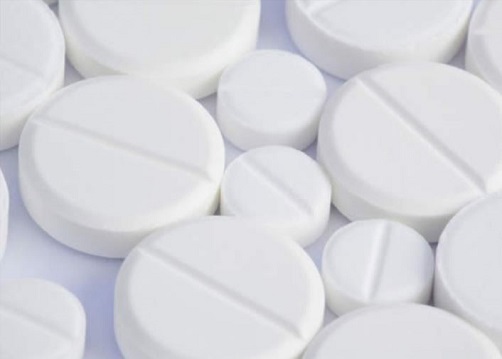Tablet Making – Common Problems And Solutions…………basic understanding wrt practical aspect
Common problems in tablet making as easy to understand and can be challenging to correct if the basics are not understood. The most common problems with tablets are lamination, capping,sticking, weight control, and tablet hardness control. Understand these problems and solving them can be much easier. Troubleshooting problems can be challenging. The basic rule in troubleshooting is to make one change at a time. Never change many variables, as you will not know which change corrected the problem. The most important rule in fixing tablet defects to attain accurate weight control. Lamination, capping, sticking, Hardness issues cannot be corrected unless weights are consistent tablet to tablet. The tighter the range of weight the easier it is to correct other defects. I cannot over emphasize the importance of tight weight control. Accurate tablets weights are often the key to solving compression problems.
Tablet Lamination
Lamination is when the tablet splits apart in single or multiple layers. Lamination is often blamed on over compressing – too much compression force flattens out the granules, and they no longer lock together. Lamination can also occur when groups of fine and light particles do not lock together. These groups of fine and light particles simply will not compress well. Reducing thickness and increasing dwell time will give these particles more of a chance. Adding precompression or slowing the machine speed down can increase dwell time. Adding a taper into the die will help eliminate lamination, however, many lamination problems are directly attributed to the formulation, incomplete blending, or de-blending on the tablet press.
Tablet Capping
Capping is often directly related to air entrapment. That is, the tooling (punches & dies) is designed to allow the air to escape between the upper punch tip and the die wall. The upper punch tip is smaller in diameter than the lower punch tip in order to allow the air to evacuate during compression. For this reason capping is often associated with air entrapment. Running a tablet press too fast may not allow enough time to evacuate the air completely. Compression can be so quick that when air is evacuated it also drives the fine, dry and light particles (noncompressible particles) to the caps edge, thus resulting in capping. The first step to resolve capping is to increase dwell time. Dwell time is controlled by press speed, compression stations (main compression & pre-compression) and punch head flat diameter. Punch head flat diameter is often overlooked. As punches wear, the punch head flat usually becomes smaller and smaller (less and less dwell time). Variations in hardness tablet to tablet can be attributed to changes in punch head flat diameter. Also, worn dies (dies with a wear ring) will make the tablet split during ejection which gives the tablet the appearance that capping has occurred (replace the dies). A “bad” formula can contribute to capping. Dry blends, particularly, are frequent victims in nutritional supplements in that all actives are force fit into a “boiler plate formula” with little fundamental research attached. Formulas that do not contain enough binder or have excipient ratios that are out of line with established guidelines will surely bring problems like capping to the production floor. Blending too fast or too long may introduce air, breakdown granules or over blend the mixture and spoil an otherwise perfectly good formula. Under mixing actually causes segregation and indirectly causes capping.
Sticking
Sticking occurs when granules attach themselves to the faces of tablet press punches. Picking is a more specific term that describes product sticking only within the letters, logos, or designs on the punch faces. This article explains the causes of sticking and picking and describes the steps you can take to resolve both problems. Regardless whether it’s sticking or picking, the result is a defective tablet. To salvage the batch, you may have to visually inspect the tablets. This certainly will slow production and decrease yields, but there is no alternative. The formulation is completed; you can’t send it back down the hallway for reprocessing. Sticking can happen at any time throughout a batch. It occurs most often at the initial setup of the tablet press, but it might just as easily appear randomly in a production run. It might also appear at regular, predictable times. With some products, sticking is so predictable that operators consider it a success when they can run for 2 hours without any sticking. Knowing the moisture content, particle size distribution, and other product properties will help you predict whether a product will compress without sticking. However, even products that meet your specifications may stick and pick. The fact is, you may not know how well a product will compress until it is on the tablet press. The source of the problem may relate to the product, the tooling, the upstream processes, or the operation of the tablet press. It might also be a combination of these factors. When a tablet press is set up for the first production run, the operator will first adjust the weight cams to get the correct tablet weights. (Actually, you adjust the position of the lower punch in the die. In doing so, you control the volume of the die cavity. At a given bulk density, the die volume will correspond directly to tablet weight.) Once you have the weights right, adjust tablet thickness next. Tablet hardness is determined by a combination of variables, including tablet weight, tablet thickness, press speed, and the dwell time of the upper punch in the die at full compression force. Products with granules that are super-sensitive to compression call them sticky granules can form excellent tablets. But they are also prone to sticking to the punch faces. If this is the problem on your press, you are likely to see the problem worsen over the course of the production run. That’s because granules super-sensitive to compression will readily compact as they flow through the hopper and into the feed frame. If a powder compacts before it reaches the die cavity, the bulk density of the formulation increases, impeding your ability to control the tablet weights. As the weight of the tablets fluctuates, so does the compressive force. This variation in force, in turn, can exacerbate the product’s tendency to stick. That starts a downward trend, and that’s why the sticking gets worse and worse. Experienced tablet press operators know a trick about compression: If sticking is a problem, they quickly over-compress the product and make very hard tablets for a few press revolutions. This quick action, known as “shocking the press” can work very well. Why? The answer is fairly simple: The stronger compaction forces cause the granules to bind with the tablet and pull the stuck granules away from the punch face. Be careful when using this method to shock the press. If you overload the punches, you will damage them or even break them. Experienced operators can also “save” a sticking batch when inexperienced operators don’t know where to start. Experienced operators, for example, often hear changes in the sound of the press and know that the product is sticking. Their first action might be to change the compression settings, such as by increasing the force, reducing tablet thickness, or by decreasing precompression thickness (which makes the tablet thinner and harder). They may even slow the press. A good operator always pays attention to the tablet and the tablet press. The sooner you identify a sticking problem, the faster you can resolve it.
The Scraper Blade & Weight Control
Tablet weight is the most critical parameter in tablet making. Weight control on a press is really filling the die cavity consistently with the least amount of variation. The are many contributing factors to accurate weight control: Head Pressure, product flow properties, feeder settings, Feeder paddle speeds (for machines with mechanical paddle type feeders), Lower punch length variation, machine speed, and the scraper blade. The scraper blade is designed to scrape & guide the excess powders away from the die to achieve consistent volume of fill. A wore or improperly set scraper blade will influence tablet weights. This is a common problem I find in many of the facilities I visit. Proper scrape-off to achieve proper weights is often overlooked, yet it is the most important setting on the press. I often teach leads and supervisors to help their operators to constantly check and see if the scraper is scraping properly during operation. If powder is allowed to get past the scraper blade than weight control cannot be optimized. Scraper blades wear out quickly and depending on the abrasive characteristics of the product will need to be replaced on a regular basis. For some products the blade must be changed weekly, others the blade will last several weeks. However it is unusual for a scraper blade to last months. If your not watching for this wear and double checking that weight control is not optimized than you will not be able to optimize thickness, hardness and speed.
Tablet Hardness control at the press.
Tablet hardness is a result of accurate weight control, thickness control and dwell time provided that the product is blended properly, flows well, consistent bulk density and particle size range. Test your products, as a hardness problem is impossible to fix if the product being compressed is not consistent.
The basics: Lightweights result in softer tablets and heavier weight result in harder tablets. If weights are consistently within a narrow range and tablet hardness is all over the place, then what? The solution is not to pack up the product and send it back to the granulation department. The solution can be found in weight control, thickness control and dwell time. First and always attain good weight control, do not try and fix other issues until the weight range is narrow and as tight as possible. Then work on maintaining a narrow thickness range by assuring that the tooling was checked before the machine setup right? Always check the punch length and punch head flats before setting up the press and make certain the dies are in good condition. Set punch penetration as high in the die as possible usually 2-3 mm punch entrance. Once thickness is within a tight range then work on dwell time. There are many formula related issues to controlling hardness, however when the product reaches the press we must do what we can at the press with the product we have. Many times this means slowing the press until hardness is achieved. Running a press fast only makes bad tablets faster, slow the press down until hardness is with acceptable ranges. If tablet weights are accurate, thickness is accurate and the speed slowed and hardness cannot be achieved the problem is product related. We then need to start working back up stream looking a product flow, head pressure, segregation, blending, particle size, bulk density, tap density, lubricant levels, binders and process or formula development issues.












